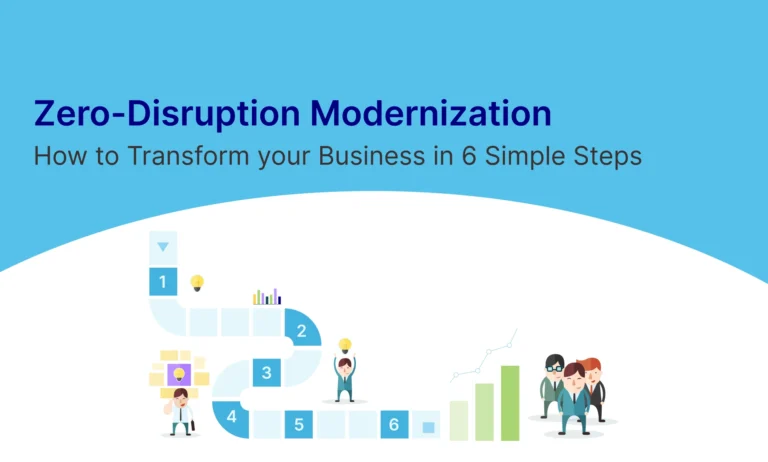Table of Contents
Product vision and product strategy are two important components in the development and success of a product. As evident as it may seem but getting these two things right would have a significant impact on the product success.
A Strategy refers to the plan or approach a company adopts to achieve its goals and objectives. It encompasses a variety of elements such as market research, competitive analysis, target customer identification, and a clear understanding of the company’s strengths and weaknesses. A well-defined strategy helps a company stay focused and aligned towards achieving its goals and can be a crucial factor in its success.
A Product vision is a clear and concise statement that defines the long-term objectives and purpose of a product. It helps to guide the development of the product and provides a roadmap for the product team to follow. A product vision statement should be inspiring, concise, and easily understood by all stakeholders. It should also align with the company’s overall strategy and business goals. A product vision statement should address the following elements:
- Problem statement: Clearly define the problem that the product is trying to solve.
- Target customers: Identify the target customers and their needs.
- Unique value proposition: Define what sets the product apart from its competitors and why customers should choose it.
- Future state: Describe the future state of the product and how it will meet the needs of its target customers.
- Inspiration: Provide inspiration for the product team and stakeholders and motivate them to work towards the common goal.
Product Strategy
On the other hand, a Product strategy should also be in place and some aspects of it should be considered well before the product is developed. A well-defined product strategy should consider the following aspects:
- Market research: Understanding the target market, including their needs, wants, and behaviors, is critical to developing a successful product strategy.
- Competitive analysis: Understanding the competitive landscape, including the strengths and weaknesses of competitors, can help a company differentiate its product and position it in the market.
- Customer needs and pain points: Identifying the needs and pain points of target customers helps to inform product development and ensure that the product is designed to meet their needs.
- Unique value proposition: A unique value proposition is a statement that clearly defines what sets the product apart from its competitors and why customers should choose it.
- Product positioning: Product positioning refers to how the product is positioned in the market relative to its competitors. A company’s product positioning should align with its unique value proposition and target market.
- Go-to-market strategy: The go-to-market strategy outlines the steps a company will take to bring the product to market and reach its target customers. This may include tactics such as advertising, promotions, and partnerships.
Not always a team does everything right and a flawed strategy would have bearing on the overall product success. Having a wrong product strategy can have several implications for a company, including:
- Loss of market share: A company with a wrong product strategy may lose its market share to competitors who have a better strategy. This can result in a decline in sales and revenue.
- Wasted resources: A company with a wrong product strategy may invest resources in developing and marketing products that do not resonate with the target market. This can result in wasted resources and a negative impact on profitability.
- Poor customer satisfaction: A wrong product strategy can lead to products that do not meet customer needs and expectations, resulting in poor customer satisfaction and negative reviews.
- Brand damage: If a company’s product strategy fails to deliver on promises and expectations, it can result in damage to the brand and reputation, making it difficult to regain the trust of customers.
- Reduced employee morale: If a company’s product strategy is not successful, it can result in reduced employee morale and motivation, as employees may feel that their efforts are not making a meaningful impact.
To avoid these implications, it is important for companies to carefully research and analyze the market, customer needs, and competitor strategies before developing and implementing a product strategy. It is also important to be open to feedback and willing to adapt and adjust the strategy as needed.
Even when a product strategy fails, it is important for a company to take a course correction to avoid further damage and pivot towards a better direction. Here are some steps a company can take to course correct after a failing product strategy:
- Analyze the root cause of failure: It is important to conduct a thorough analysis to determine the reasons behind the failure of the product strategy. This may involve conducting customer research, analyzing market trends, and reviewing internal processes.
- Re-evaluate the market: Based on the findings of the analysis, the company should re-evaluate the market to determine if there are new or different opportunities that can be pursued. This may involve identifying new customer segments, exploring different product features, or targeting a different geographic region.
- Adjust the product strategy: Once the new opportunities are identified, the company should adjust the product strategy to align with the new direction. This may involve making changes to the product features, pricing, positioning, or marketing messages.
- Communicate with stakeholders: It is important to communicate the course correction to all stakeholders, including customers, employees, investors, and partners. This can help to build trust and demonstrate a commitment to making things right.
- Implement the new strategy: After adjusting the product strategy and communicating with stakeholders, the company should implement the new strategy and monitor its performance closely. This may involve conducting regular reviews, gathering feedback from customers, and making further adjustments as needed.
By taking these steps, a company can recover from a failing product strategy and pivot towards a better direction.
Product Vision
Shifting focus to product vision, it is a long-term, aspirational description of the future state of a product. It is a guiding principle that helps to inform and align the product strategy, roadmap, and development efforts. While a product vision is meant to be a stable and enduring statement, there are certain circumstances when it may need to change. A few of these circumstances are listed below:
- Market shifts: If there is a major shift in the market landscape, such as the emergence of new technologies, changing customer needs, or the entry of new competitors, the product vision may need to change to reflect these new realities.
- Business objectives: If the company’s overall business objectives change, such as a new strategic focus or a change in direction, the product vision may need to be updated to align with these objectives.
- Customer feedback: If customer feedback indicates that the current product vision is not meeting their needs or expectations, the product vision may need to be revised to reflect their feedback.
- Technological advances: If there are significant advances in technology that can enable new features or capabilities, the product vision may need to be updated to incorporate these advances.
- Internal restructuring: If there are changes in the internal organization, such as a new leadership team or a reorganization of product development teams, the product vision may need to be revisited to ensure that it remains aligned with the new organizational structure.
In summary, a product vision should change when there are significant shifts in the market, business objectives, customer needs, technology, or internal organizational structure that require a new direction for the product. However, any changes to the product vision should be carefully considered and communicated to all stakeholders to ensure alignment and support.
Now when strategy and product vision are combined, they provide a clear understanding of the market, target customers, and the problem that the product is trying to solve. This information is then used to guide product development and ensure that the product is positioned to meet the needs of its target market. A clear strategy and product vision can also help a company to make informed decisions about product development and marketing. The combination of these elements provides a comprehensive view of the market and helps to ensure that resources are being used effectively to achieve the product’s goals.
A compelling product vision can inspire and align the development team, while a well-defined product strategy can guide the decision-making process and ensure that the product is focused on the most important customer needs. Some ways were product vision combined with strategy can have a significant impact on a product:
- Provides direction and focus: A well-defined product vision and strategy provides clear direction and focus for the development team, ensuring that everyone is working towards a common goal. This helps to avoid distractions and ensures that resources are allocated effectively.
- Aligns the team: A clear product vision and strategy can help to align the team around a shared purpose and inspire them to work towards a common goal. This can help to build a strong sense of team spirit and collaboration.
- Guides decision-making: A well-defined product strategy can guide the decision-making process and ensure that the product is focused on the most important customer needs. This can help to avoid wasted effort and resources and increase the chances of success.
- Builds customer trust: A clear product vision and strategy can help to build customer trust by demonstrating a clear understanding of their needs and priorities. This can help to increase customer satisfaction and loyalty.
- Drives innovation: A well-defined product vision and strategy can help to drive innovation by encouraging the development team to think creatively and look for new ways to meet customer needs.
Summary
A clear and compelling product vision and strategy can have a significant impact on a product by providing direction and focus, aligning the team, guiding decision-making, building customer trust, and driving innovation. As such, it is important for teams to carefully craft and communicate their product vision and strategy to ensure that it is effective and aligned with their business objectives.
Learn More – Product Roadmapping – Byteridge







